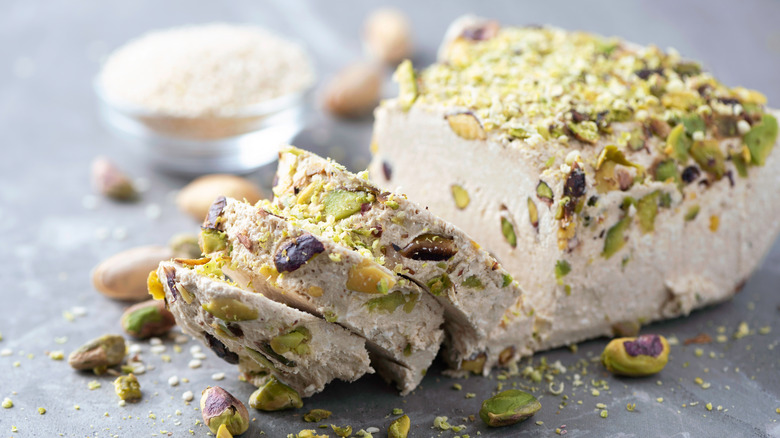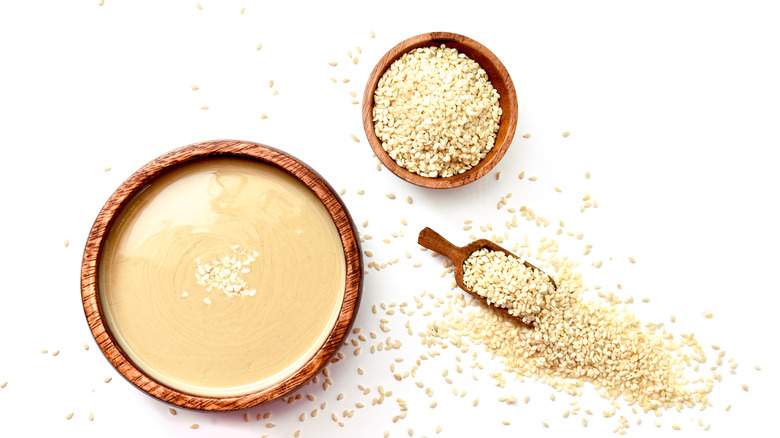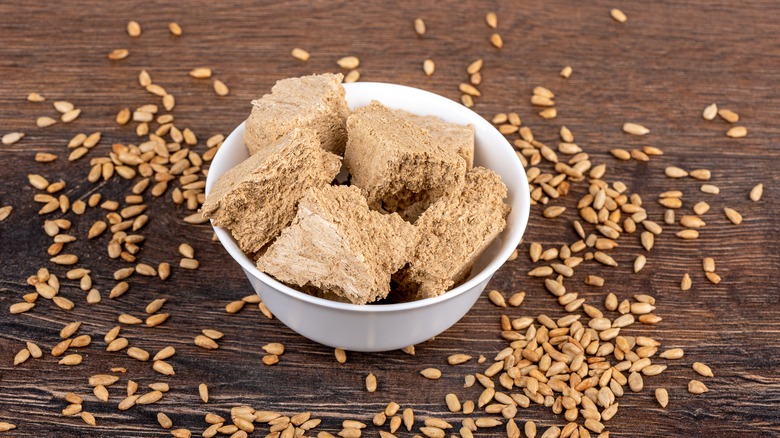What Makes Halva So Unique?
If you've never had halva before, you don't know what you're missing. This rich candy with a crumbly fudge-like consistency is like nothing else. It's no wonder it has had such popularity for centuries.
The basic halva recipe is made of three simple ingredients: toasted sesame seeds, oil, and a sweetener like sugar or honey. The seeds are ground to create tahini (yes, the same tahini you find in hummus), before sugar and water are boiled and then added to the tahini. Once it's been in the fridge for 36 hours, you're ready to indulge.
Halva has a nutty taste from the sesame seeds, but the real flavor festival begins when variations come into the picture. Things like nuts or dried fruits may be added, cocoa swirled in, or enhancements like vanilla extract and spices like cardamom or cloves can be incorporated into the mixture. The only limit is your imagination.
A treat across continents
Halva, sometimes spelled halvah, originated in the Middle East but is considered a culturally diverse candy. The name comes from the Arabic halwá, a word that means sweet, and its origins go back centuries (per MasterClass). Its popularity started to spread with every culture adding a signature ingredient to the recipe. The Indians added ghee, the Egyptians added crunchy nuts, and an Ottoman sultan built a halva house to produce the candy using his own variations (per Moment Mag). What makes this sweet treat so unique is that it has embedded itself in the lives of people worldwide, from Brooklyn to India to Greece.
Halva arrived in the U.S. in the early 20th century when New York City first began to epitomize the melting pot of different cultures we know it as today. In 1907, a Ukrainian immigrant named Jacob Radutzky started making the confection in his garage on the Lower East Side of Manhattan, using a halva recipe from the old country. He later started the company Joyva, which is still making the treat today and is run by Radutzky's descendants. Joyva is the largest manufacturer of halva in the U.S. (via New York Times).
Everything in moderation
According to Nutrition Value, halva has a host of nutritionally beneficial properties like protein and iron. But due to its high sugar content, it can hardly be considered a healthy food, and the oil in the sesame seeds makes halva a confection loaded with fat. An eight-ounce bar of halva contains a whopping 1,183 calories and 73 grams of fat! The good news is, according to House of Halva, an opened package of halva can last up to six months in the refrigerator, enabling you to savor the treat slowly and in moderation.
There are so many ways to enjoy this Middle Eastern treat. You can let halva melt on your tongue to savor its flavors, crumble some over your toast at breakfast, or add it to your charcuterie board for an international flair. Or, take the advice of Greg and Lucy Malouf, authors of the book "Moorish," and serve pistachio halva with cool slices of watermelon on the side to create a dessert fit for an Ottoman sultan.


